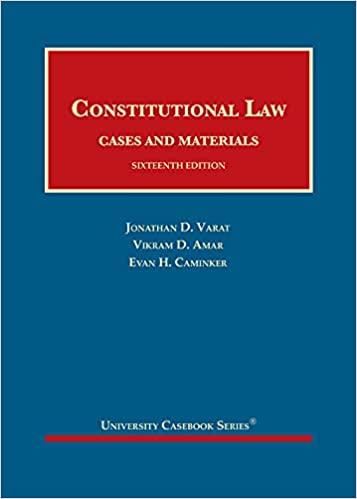Question
A great way to examine this issue is to take a look at the death penalty in this country. Before 1972, the death penalty was
A great way to examine this issue is to take a look at the death penalty in this country. Before 1972, the death penalty was not considered to be cruel and unusual punishment, and it was rather routinely applied throughout the states. Then, in 1972, in the Furman v. Georgia case, the Supreme Court decided that the death penalty "could" be considered cruel and unusual punishment, primarily because they found that there was too much inconsitency in the application of the death penalty. So, with that in mind, the Furman decision established a de facto moratorium on the death penalty across the United States. At that time, those who had been sentenced to death had their death sentence commuted to life. This is why convicted murderers such as Charles Manson are still alive today. His sentence was one which was commuted. So, speed forward a few years to 1976. The Supreme Court hears the Gregg v. Georgia case and decides that that point that they no longer wanted to be placed in the sole position of deciding whether a punishment is indeed 'cruel and unusual' under the law. The Gregg Court held that whether or not to reinstate and continue with the death penalty would be a decision left up to each state. And so, after Gregg, the death penalty returned in a majority of states.
Take a step back and consider these changes to the law and why they were made. First, what are your thoughts on the backwards, "de facto" application of the Furman Court holding? Should the law ever be 'retro-active?' Second, consider why these changes were made. Is the Supreme Court the only perspective that matters, or are they actually influenced to a great degree by public perception? If they are not influenced by the public, then did they simply make a mistake in Furman? What do you think?
Step by Step Solution
There are 3 Steps involved in it
Step: 1

Get Instant Access to Expert-Tailored Solutions
See step-by-step solutions with expert insights and AI powered tools for academic success
Step: 2

Step: 3

Ace Your Homework with AI
Get the answers you need in no time with our AI-driven, step-by-step assistance
Get Started


